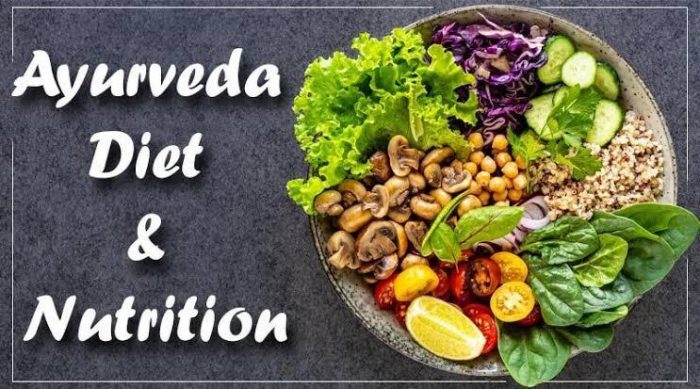By
Dr G Om Prakasham
Chairman, Lotus Wellness
Consultant Cardiac Surgeon
Ahara is one of the three pillars of life according to Ayurveda. The ancient science includes detailed descriptions of food and drink, with food classification based on their taste, therapeutic qualities, etc., food safety and measures for the same, different incompatibilities of food based on their tastes, processing, quantity, time, place, etc., and intake based on the digestive ability of an individual, and the nature of food that is being consumed. Primary classification of food is based on its appropriateness to body and mental constitution based on the five elements and tridosa compatibility.
Ahar (food) is one of the most important factors for health
Taste (Rasa) : Indicator of Health Effects
One of the ways of food classification in Ayurveda is based on rasa. There are six major tastes according to Ayurveda, viz., sweet, sour, salty, pungent, bitter, and astringent. There are primary and secondary qualities (guna) that increase the properties of a material. This is further augmented by potency (virya), post digestive effect (vipaka), and therapeutic action (karma).
Food Can Alter Moods
Another interesting taxonomy of foods is based on their effect on psychological dispositions of individuals. According to Ayurveda, there is a subtle link between disease manifestation and the six psychological expressions, such as lust, anger, greed, desire, attachment, and ego. These psychological states are closely linked to foods. This connection is further discussed in terms of three states of being including sattva, rajas, and tamas. Sattva is the contented state, rajas an excited state whereas tamas relates to a lethargic disposition, i.e., foods can induce these states of mind
Proper Metabolism is Key to Good Health
The energy that drives metabolic processes in the body is called agni, which also has an important effect on health. There are three stages in the digestive cycle starting from the gross form in the gastrointestinal tract followed by tissue-specific metabolism and elemental level metabolism. In this sequence of events, vipaka has a specific impact on the body. Generally, the predominant taste of the food material remains in the post digestive effect; but for materials with multiple tastes, the taste changes post metabolism: an important indicator of its impact on the system. For example, Indian gooseberry (amla) is predominantly sour in taste but post-digestive effect is sweet. Even though sour taste can increase pitta in the body, gooseberry nullifies pitta due to the sweet post digestive function.
Prakriti – A Guide to Personalized Diets
An individual’s prakriti is another important determinant of the effect of food on the system. Prakriti of an individual is characterized by a set of physical, physiological, and psychological attributes. For example, based on taste preference, individuals can be grouped as vata (having affinity for sweet, sour, and salty tastes); pitta (with liking for sweet, bitter, and astringent taste), and kapha (for pungent, bitter, and astringent tastes). Whereas these tastes mitigate any negative effects of the inherited constitution, usage of tastes in the reverse order can cause imbalance in the body. For example, if a vata constitution person continuously consumes pungent, bitter, and astringent tasting materials, it could lead to rapid aging and degeneration of the body.
Incompatible Foods (Viruddha Ahara)
There are 18 forms of incompatibilities according to Ayurveda. Incompatibilities are explained based on the potency of materials, processing, quantity/dose, process of intake, time/season; combining materials, such as sour fruits and milk or honey and ghee (clarified butter) in equal quantities; milk along with horse gram, jack fruit, or fish; or even heating honey. This can be explained in Ayurvedic terms as incompatibility in the nature of the food items.
Wholesome and Unwholesome Food (Pathya and Apathya)
Ayurveda prescribes several examples of wholesome supplements, pathya and apathya. These are particularly followed in disease management. For example, pomegranate, amla (Indian gooseberry), buttermilk, etc. are mentioned as good pathya ahara in the management of iron-deficiency anemia Processing of food can change it’s potency, safety, and overall effect on health. Curd is considered unwholesome in most dosa imbalanced conditions. There are specific instructions to consume yogurt; that it should not be taken at night, or in seasons such as spring, summer, and fall. It should be taken with sugar candy or green gram soup or honey. There are also disease-specific or medicine-specific instructions that should be followed for consumption of food. It is indicated that certain tastes have direct correlation with disease manifestation, hence, they are avoided during treatment of those conditions.
ABOUT LOTUS WELLNESS
Lotus is a Top rated Wellness and Rehabilitation Center in India with a Holistic Approach offering the best programs for Detox , Deaddiction and Absolute Wellness.
LOTUS WELLNESS AND REHABILITATION CENTER
Pollachi, Coimbatore , Tamilnadu , India
Call confidentially 24/7 (+91 7339062555)
Reach us at info@lotuswellness.life
To know more about us visit our website
www.lotuswellness.life

